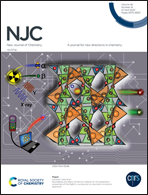Synthesis of P-doped NiS as an electrode material for supercapacitors with enhanced rate capability and cycling stability†
Abstract
Nickel sulfide (NiS) has sparked considerable interest as a promising electrode material for supercapacitors. However, the poor electrical conductivity and unstable structure during the continuous charge–discharge process have limited its practical applications to a great extent. Herein, we report a two-step solvent-thermal method to synthesize phosphorus-doped NiS nanocrystals (P-NiS). The bulk doping of P not only enhances the electrical conductivity and increases the number of electrochemical active sites, but also strengthens the structural stability of the NiS nanomaterial. As a result, the synthesized P-NiS demonstrated an impressive electrochemical performance with a high specific capacity (727.79 C g−1), superior rate performance (50.60% capacity retention at 50 A g−1), and excellent cycling stability (93.10% capacity retention after 3000 cycles). Furthermore, a hybrid supercapacitor (HSC) of P-NiS//AC was assembled in a 2 M KOH electrolyte. It delivered a maximum energy density of 39.80 W h g−1 at the power density of 809.50 W kg−1 and cycling stability with 89.70% capacity retention after 6000 cycles at 1.6 V. This study provided an effective strategy to achieve the bulk doping of heteroatoms into the transition metal sulfides for improving the intrinsic properties of electrodes in electrochemical energy-storage devices.



 Please wait while we load your content...
Please wait while we load your content...